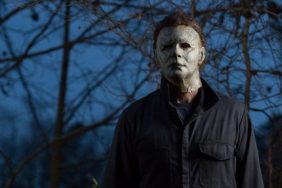Cast:
Jurgen Leth as himself
Lars von Trier as himself
Analysis:
Imagine if you were given the opportunity to get a legendary filmmaker who has had a great impact on your career to remake his groundbreaking film over thirty years later. Now imagine if you were able to convince him to remake his film five times following a strict set of rules and restrictions each time. This is Danish filmmaker Lars von Trier’s latest experiment in The Five Obstructions, as he convinces director Jurgen Leth to recreate his 1967 existential art film, “The Perfect Human”, a film that impacted von Trier’s own filmmaking process.
von Trier is already legendary for his use of limitations while filmmaking, most notably by his induction of Dogme 95, a manifesto for filmmakers to make low budget movies using natural sets and lighting. Trier’s “obstructions” placed on Leth are far more whimsical, forcing him to travel to such locations as Cuba and Bombay, while depicting certain things without the benefits of normal filmmaking techniques.
The original film was a simple narrative piece describing the perfect man and woman while showing them doing everyday things like shaving, dancing, etc. Still, even the first set of rules seems almost impossible, forcing Leth to make a version of the film using edits of only 12 frames (about a third of a second) or less. Leth faces up to the challenge, turning his hurdles into an artistic device. The resulting film, while choppy, has a distinctive look that makes it even artier than the original.
Leth becomes his own actor for the second “obstruction”, putting himself through a humiliating series of stunts, jumping up and down, falling and doing other things that a man of his age probably shouldn’t be doing. The film’s most powerful moment has him recreating the scene from “The Perfect Human” of a man eating a fancy meal, this time doing it in the middle of a crowded poverty-stricken Bombay street in order to fulfill von Trier’s obstruction. The effects of that environment on the aging filmmaker is deeply felt by the viewer as well.
For the third film, Leth is punished on a technicality for breaking one of the rules put upon him. As expected from von Trier’s whimsical sense of humor, the punishment is that Leth is giving free reign to remake the film any way he wants. This almost becomes Leth’s biggest challenge so far, except that he uses the opportunity to create a modern version of the film set in Brussels.
The fourth film is even more surreal as the only rule is that it has to be a cartoon, an artform that both directors seem to hold with the highest disdain. Working with an animator, Leth winds up with a beautiful and stylistic piece not unlike Richard Linklater’s Waking Life.
From the beginning of the movie, the conversations between the two directors are lively and amusing, keeping the tone of the movie light. By the third obstruction, you think that von Trier is a sadistic monster for putting Leth through all of these tests purely because he can. Thankfully, the tables are turned–both on Leth and on the viewer–when von Trier makes his own version of “The Perfect Human”. Leth is urged to read a narrative written by von Trier over footage from von Trier’s own documentary about Leth facing the challenges. With this last obstruction, one realizes that the entire ordeal and the documentary itself are meant as a loving and moving tribute to a director who has had such a huge impact on von Trier’s life and career.
Overall, The Five Obstructions is an intriguing character study about human nature, as well as a brilliant documentary that examines the art of filmmaking as well as the distinctions between these two Danish filmmakers. Anyone interested in filmmaking or the process involved will get something out of this interesting experiment.










